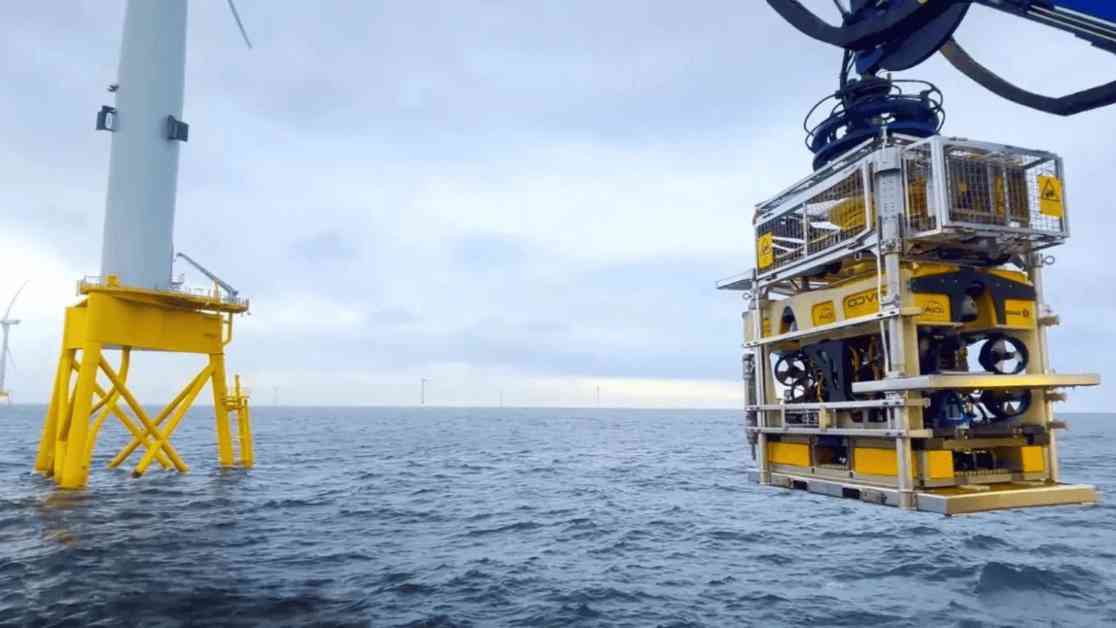Revolutionizing Marine Technology with AI-Driven Underwater Vehicles
In a groundbreaking development for the marine technology industry, the world’s first autonomous underwater vehicle driven by artificial intelligence (AI) has been successfully deployed in Scotland. This cutting-edge technology marks a significant milestone in the field of underwater robotics, as it promises to revolutionize the way underwater inspections and surveys are conducted. The vehicle, developed by Bristol-based Beam, was recently utilized to inspect jacket structures on the Seagreen wind farm, which is Scotland’s largest offshore site.
The deployment of the AI-driven underwater vehicle has been met with widespread acclaim from industry experts and stakeholders. Beam, a leading provider of high-technology offshore wind services, hailed the achievement as a major breakthrough in the sector. According to the company, the advanced AI technology enables the vehicle to perform complex underwater tasks without the need for human intervention, thereby enhancing the efficiency and cost-effectiveness of underwater inspections.
Advancing Sustainable Energy with Innovative Technology
The successful implementation of the AI-driven underwater vehicle at the Seagreen wind farm represents a significant step forward in the advancement of sustainable energy solutions. The wind farm, a joint venture partnership between SSE Renewables and TotalEnergies, is not only Scotland’s largest offshore site but also the world’s deepest fixed bottom offshore wind farm. Operational since October 2023, the Seagreen wind farm boasts 114 turbines and has the capacity to generate enough green energy to power over 1.6 million homes, equivalent to two-thirds of all Scottish households.
Matthew Henderson, Technical Asset Manager at SSE Renewables, emphasized the importance of embracing cutting-edge technologies like autonomous inspections in the renewable energy sector. Henderson highlighted the benefits of reducing the personnel required for offshore inspections, accelerating maintenance works, and gathering valuable data to inform asset integrity planning. As the industry moves towards deeper waters and offshore locations, the ability to collect high-quality inspection data in a low-risk manner becomes increasingly crucial for achieving sustainability goals.
Future Prospects and Industry Impact
Looking ahead, Beam plans to expand the utilization of the AI-driven underwater vehicle across its fleet of DP2 vessels, remotely operated vehicles (ROVs), and autonomous underwater vehicles (AUVs) in the coming years. Brian Allen, CEO of Beam, expressed pride in the successful deployment of the world’s first AI-driven underwater vehicle and highlighted the transformative potential of automation in enhancing the efficiency of offshore wind farm inspections and maintenance. Allen emphasized the importance of collaboration with forward-thinking partners like SSE Renewables in driving innovation and realizing the full potential of advanced technologies in the industry.
The adoption of AI-driven underwater vehicles is poised to have a significant impact on the marine technology sector, paving the way for more efficient and cost-effective underwater operations. By leveraging advanced AI algorithms, these vehicles can autonomously navigate underwater environments, conduct intricate inspections, and gather critical data for asset management and maintenance purposes. The integration of AI technology into underwater robotics represents a major leap forward in enhancing the capabilities and efficiency of marine exploration and infrastructure maintenance.
In conclusion, the deployment of the world’s first AI-driven underwater vehicle in Scotland marks a significant milestone in the evolution of marine technology and underwater robotics. The successful utilization of this cutting-edge technology at the Seagreen wind farm underscores the potential for AI to revolutionize the field of underwater inspections and surveys, ultimately driving greater efficiency and sustainability in the offshore energy sector. As industry stakeholders continue to embrace innovative technologies like AI-driven underwater vehicles, the future of marine exploration and infrastructure maintenance holds immense promise for advancing towards a more sustainable and efficient energy landscape.
































